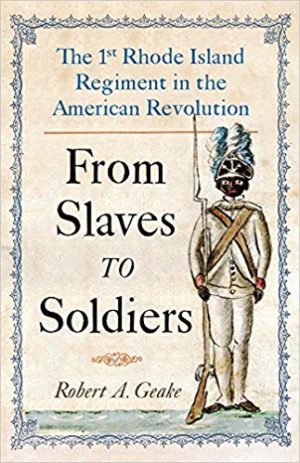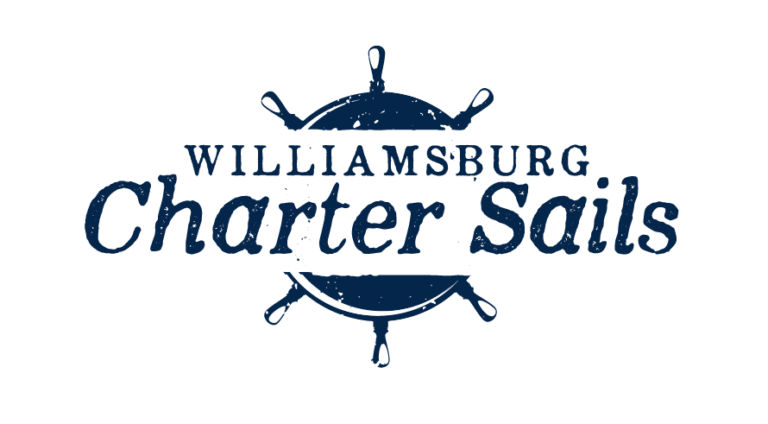
People ask, “What was slavery like?” During the winter at Valley Forge, General Washington faced chronic shortages of manpower. Rhode Island General James Varnum proposed that Rhode Island recruit an all-African American regiment to serve in the Continental Army. Years later the first award for injuries in battle was won by a black soldier at the Siege of Yorktown. In From Slaves to Soldiers: The 1st Rhode Island Regiment in the American Revolution Robert A. Geake and Lorén M. Spears use a combination of microhistory and narrative storytelling to tell the story of the men who enlisted and where the regiment served.–Museum of the American Revolution, Philadelphia |
Throughout the war, men served in a variety of ways, often beginning at a young age with a local militia. They mustered, marched and provided protection for their own communities. Many of these signed on with the Continental regiments as the war progressed. They climbed the ladder into a junior officer position. Such was not the case with blacks or indigenous peoples. They remaied confined to the local militias. But once they were allowed to join, New England states contributed the largest portion of blacks to the Continental Army. A report in August 1778 records some 755 black soldiers scattered over fourteen brigades.” None of these men would ever climb above the rank of private. |
A careful reading of Rhode Island’s historical records shows that merely a handful of men of color deserted the regiment after it was integrated with the 2nd Rhode Island Regiment. Research shows that fifty-eight slaves of African or indigenous descent escaped from their masters in the years 1774-83. Of those, twelve appear on the muster rolls of the 1st or 2nd Rhode Island regiments. At least three others appear in regiments in adjoining Massachusetts or Connecticut, who also admitted blacks and indigenous men into the army, following Rhode Island’s lead. Cato Brown of East Greenwich served in both Rhode Island and Connecticut regiments. Sambo Brown deserted Nixon’s Brigade in 1776 but later appears on the Record of Connecticut Men in the Military and Naval Service during the Revolutionary War. A Narragansett named Anthony Jeremiah served in a Massachusetts regiment, where his fellow soldiers dubbed him “Red Jerry.”Served Five Full Years |
The great majority of those men of color who enlisted in the Rhode Island regiments would serve five full years. Historian Benjamin Quarles notes in his historic work The Negro in the American Revolution that “The New England states, despite their relatively small Negro population, probably furnished more colored soldiers than any other section.” As Quarles explains, once enlisted, “Negros were less inclined than white soldiers to walk off without official leave. They were not likely to have a farm that needed protection, nor the kind of home that inspired homesickness. They had less to desert to.” |
The greater number of white soldiers who were integrated into the 1st Rhode Island Regiment also stayed to serve. Men such as Thomas Stafford, a laborer, and William Holston, a cooper, both from the village of West Greenwich. Similarly, fifers Thomas Mitchell and Joseph Dexter had both enlisted from Glocester in May 1777. All these men served in the regiment until the end of the war. |
No Popular Outcry from Slaves to SoldiersHistorian Henry Wiencek observed, “There is no record of a popular outcry against the black presence. Also no record of fights or interdisciplinary problems caused by racial integration. The common white New England soldier seems to have accepted blacks. The objections to the black presence came not from the rank and file but from the highest levels of policy makers and politicians.” |
Then the Continental Army camped near Fishkill, New York, while Colonel Christopher Greene went with the Rhode Island regiment to a location some ten miles distant, at Pines Bridge on the Croton River. They encamped at the so-cal1ed “Rhode Island Village,” while Greene took up residence in a nearby farmhouse belonging to the Davenport family. Eventually Major Ebenezer Flagg Jr. of Newport joined him in mid-April. |
Next, Colonel Greene would write in upbeat spirits to Colonel Samuel Ward—a leader in the Battle of Rhode Island—on April 16: “I often very agreeably reflect upon the toils and dangers we have passed through together during the course of this horrid war and nothing could have been more agreeable than to have had your company in command to its close—But this could not be… we must therefore for the present remain separated. Shall join myself in a very few days.” He also, however, alluded to the shortage of men, both from disease and the recent desertions: “We have at present only about two hundred men including officers to guard twenty miles but expect as soon as the men get out of the small pox to have our force augmented to three or four hundred.” |
They All DiedTheir movements had not gone unnoticed, however, and in the pre-dawn hours of May 14, 1781, a reported two hundred and sixty light horse infantry made up of Loyalists under the command of Colonel James DeLancey forded the river and laid a surprise attack on the encampment. Early historian William Cooper Nell, in his book The Colored Patriots of the American Revolution, would write of the bravery of the black men in the 1st Rhode Island Regiment: “Among the traits which distinguish the black regiment was devotion to their officers… Colonel Greene, the commander of the Regiment fell mortally wounded. The sabers of the enemy only reached him through the bodies of his faithful guard of blacks. They hovered over him to protect him, and every one of them died.” |
Let’s Go Sail from Slaves to Soliders
Scroll down Rates and pick a day for a sailboat charter. Scroll down Reviews on Trip Advisor. Go back to the Home Page of Williamsburg Charter Sails.
from slaves to soldiers from slaves to soldiers from slaves to soldiers from slaves to soldiers
https://williamsburgchartersails.com



